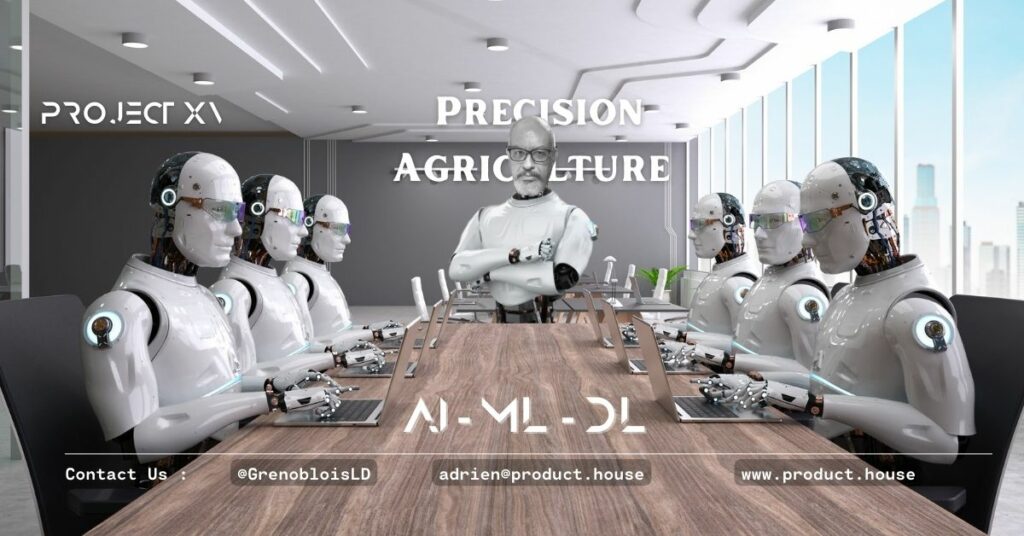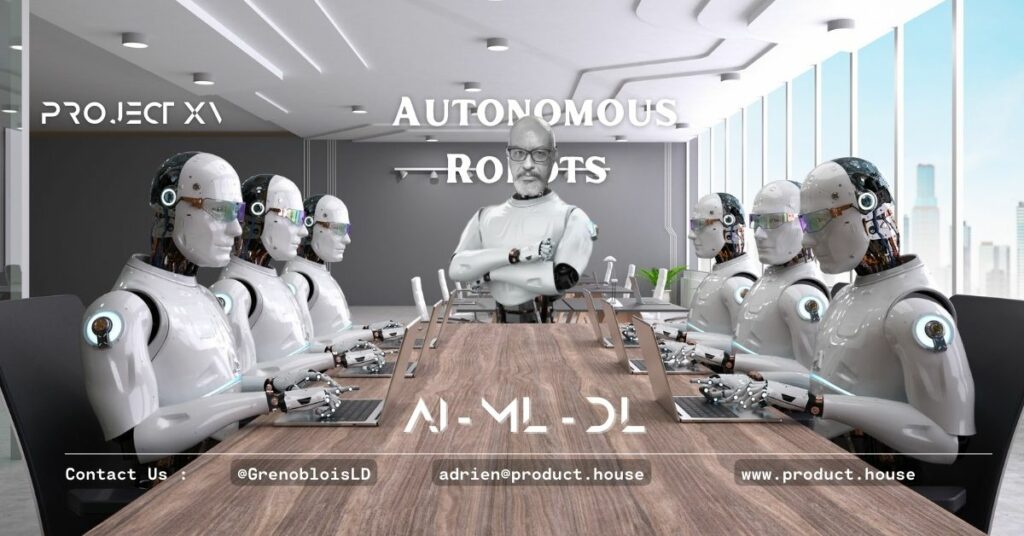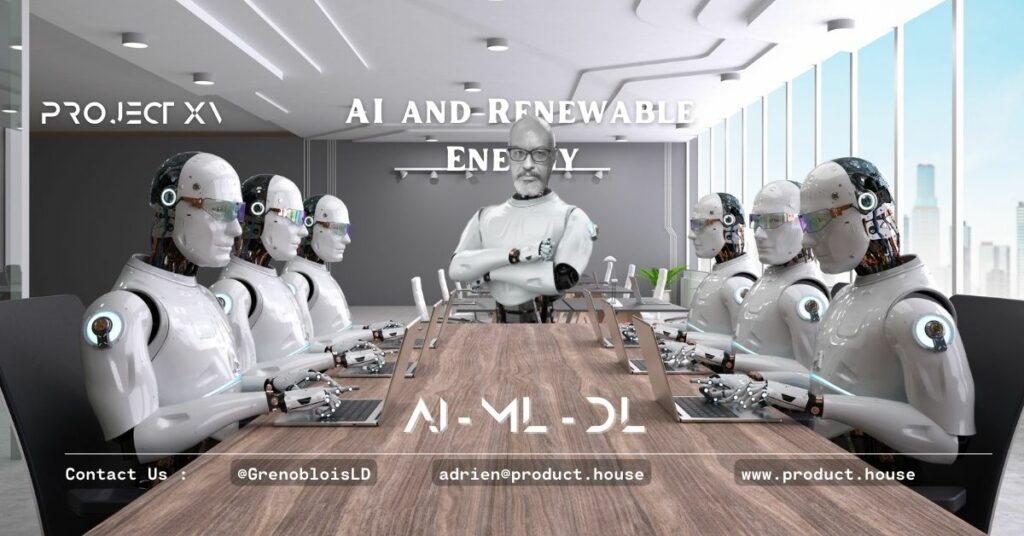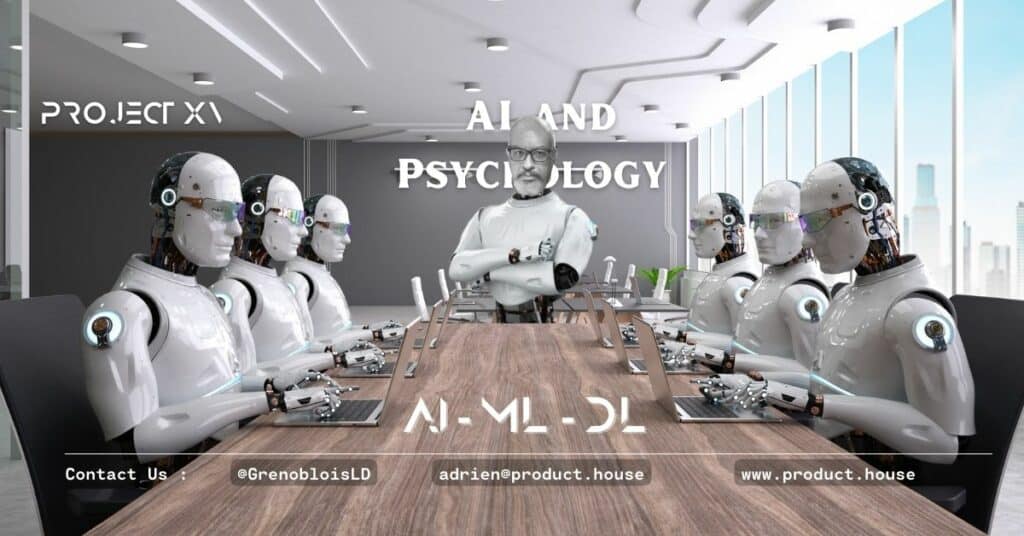Feeding the World with AI: How Technology Is Transforming Agriculture
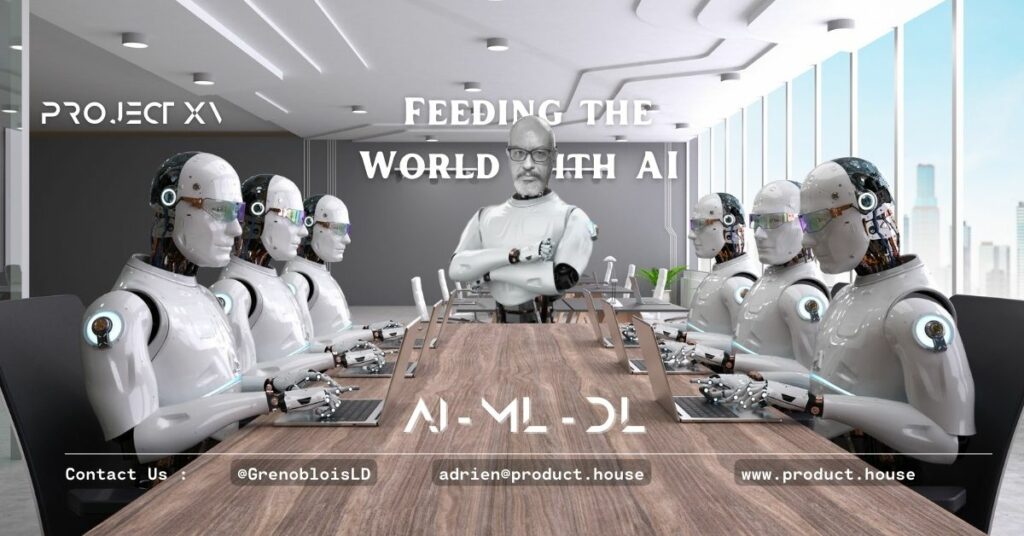
Agriculture has always been a crucial part of human civilization, and with the growing population, it has become even more critical to ensure that we produce enough food to meet the demand. Artificial intelligence (AI) is transforming agriculture in numerous ways, from precision farming to crop monitoring and prediction. In this article, we’ll explore how AI is changing agriculture and what the future holds for this industry.
Precision Farming
One of the most significant ways that AI is changing agriculture is through precision farming. Precision farming uses sensors, drones, and other technologies to monitor crop growth, soil quality, and weather conditions. AI algorithms then analyze this data to determine the optimal amount of water, fertilizer, and other resources needed to maximize crop yields.
Crop Monitoring and Prediction
AI is also being used to monitor and predict crop growth and disease. By analyzing data from sensors and drones, AI algorithms can identify areas of crops that need attention, such as irrigation or pest control. This can help farmers increase yields and reduce crop losses.
Livestock Management
AI is also being used to improve livestock management. By monitoring animal behavior and health, AI algorithms can detect early signs of disease or distress and alert farmers to take action. This can reduce animal suffering and improve animal welfare.
Environmental Impact
AI is also being used to reduce the environmental impact of agriculture. By optimizing resource usage and reducing waste, AI-powered agriculture can help reduce greenhouse gas emissions and protect natural resources.
Challenges
While there are many benefits to using AI in agriculture, there are also challenges that need to be addressed. One of the biggest challenges is the cost of implementing these technologies. Many farmers may not have the resources to invest in AI-powered agriculture.
Another challenge is the need for data privacy and security. Farmers need to ensure that their data is protected from cyber threats and that they retain ownership of their data.
Future of AI in Agriculture
The future of AI in agriculture is promising. As technology continues to advance, we can expect to see more use of AI in agriculture, including the development of new precision farming techniques, improved crop monitoring and prediction, and more environmentally friendly agriculture.
Conclusion
AI is transforming agriculture, making it more efficient, environmentally friendly, and sustainable. While there are challenges to be addressed, the potential benefits of these technologies are significant. As we look to the future, we can expect to see more use of AI in agriculture, leading to a more connected, sustainable, and food-secure world.
FAQs and their Answers:
- What is precision farming?
Precision farming uses sensors, drones, and other technologies to monitor crop growth, soil quality, and weather conditions to determine the optimal amount of water, fertilizer, and other resources needed to maximize crop yields. - How is AI used in crop monitoring and prediction?
AI is used to monitor and predict crop growth and disease by analyzing data from sensors and drones, which can identify areas of crops that need attention, such as irrigation or pest control. - How is AI used in livestock management?
AI is used to improve livestock management by monitoring animal behavior and health, which can detect early signs of disease or distress and alert farmers to take action. - How is AI reducing the environmental impact of agriculture?
AI-powered agriculture can help reduce greenhouse gas emissions and protect natural resources by optimizing resource usage and reducing waste. - What are the challenges of using AI in agriculture?
Challenges include the cost of implementing AI-powered agriculture solutions and data privacy and security concerns. - What is the future of AI in agriculture?
As technology continues to advance, we can expect to see more use of AI in agriculture, leading to more efficient, environmentally friendly, and sustainable agriculture practices.
Resources:
- “Artificial Intelligence in Agriculture: A Comprehensive Review” by R. Selvaraju and V. N. Ramakrishnan: This book provides a comprehensive review of the use of artificial intelligence in agriculture, including precision agriculture, crop monitoring, and livestock management. It also discusses the challenges and opportunities associated with these technologies.
- “AI for Agriculture: Opportunities and Challenges” by D. Zhang and G. Gao: This book explores the opportunities and challenges of using artificial intelligence in agriculture, including precision farming, crop monitoring, and supply chain management. It also examines the ethical and social implications of these technologies.
- “Precision Agriculture: Advances, Challenges and Emerging Opportunities” by Nicolas Tremblay and Charlotte Decock: This book provides an overview of precision agriculture, including the use of sensors, drones, and artificial intelligence. It also discusses the challenges and emerging opportunities associated with these technologies.
Books:
- “Artificial Intelligence in Agriculture” by Javid Iqbal and Ali Asghar: This book provides an overview of the use of artificial intelligence in agriculture, including precision farming, crop monitoring, and livestock management. It also discusses the challenges and opportunities associated with these technologies.
- “Agriculture in the Age of Artificial Intelligence” by Amit Sankhala and Dipanjan Mukherjee: This book explores the ways in which artificial intelligence is transforming agriculture, including precision agriculture, crop monitoring, and supply chain management. It also examines the ethical and social implications of these technologies.
Experts:
- Dr. Abhinav Gupta is an Associate Professor at Carnegie Mellon University. He is a renowned computer vision and robotics expert and leads the Visual Robot Intelligence Lab at CMU. His research interests include visual learning, reasoning, and perception in robots, with applications in areas such as robotics, autonomous driving, and healthcare.
- Dr. Anil Jain is a Professor of Computer Science and Engineering at Michigan State University. He is a world-renowned expert in biometrics and computer vision, and his research has contributed significantly to the development of automated fingerprint identification systems. His current research interests include face recognition, iris recognition, and biometric system security. Dr. Jain has received numerous awards for his contributions to the field of biometrics and computer vision, including the IEEE Computer Society Technical Achievement Award in 2016.
Case Studies:
- FarmWise: AI-powered precision farming for vegetable farming
- Blue River Technology: AI-powered crop monitoring and spraying for cotton farming
Examples of Use:
- Precision farming for optimizing crop yields and reducing resource usage
- AI-powered livestock management for improving animal welfare
Glossary:
- Artificial Intelligence (AI): The ability of machines to perform tasks that normally require human intelligence.
- Precision Farming: The use of sensors, drones, and AI algorithms to optimize crop yields and reduce resource usage.
- Crop Monitoring and Prediction: The use of AI to monitor and predict crop growth and disease.
- Livestock Management: The use of AI to improve animal welfare and reduce animal suffering.
- Environmental Impact: The impact of agriculture on the environment, including factors such as greenhouse gas emissions and resource usage.
Quiz Questions:
- What is precision farming?
- How is AI used in crop monitoring and prediction?
- How is AI used in livestock management?
- How is AI reducing the environmental impact of agriculture?
- What are the challenges of using AI in agriculture?
- What is the future of AI in agriculture?



